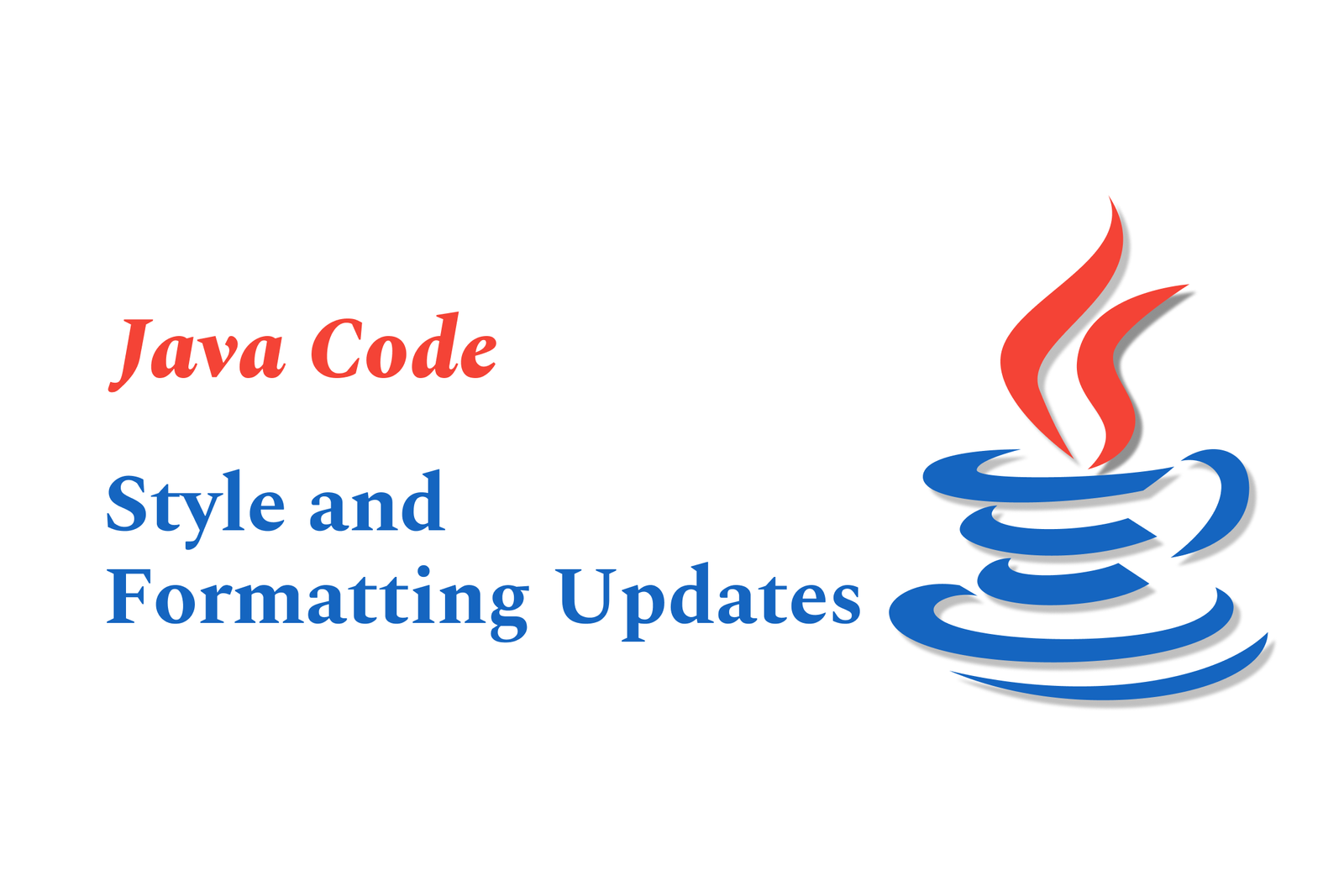Java Code Style and Formatting Updates
Java Code Style and Formatting Updates ensure consistent, readable, and maintainable code by defining clear rules for file structure, indentation, imports, and comments—embracing tools and guidelines like the Google Java Style Guide to standardize Java development across teams and projects.
Java Code Style and Formatting Updates
1 ) Google Java Style Guide Overview
Comprehensive coding standards for Java source files to adhere strictly to Google Style.
Covers aesthetics, formatting, and coding conventions with enforceable rules.
Clarifies terminology: “class” includes classes, records, enums, interfaces, and annotations; “member” covers nested classes, fields, methods, constructors.
Focuses primarily on implementation comments termed as “Javadoc” for documentation.
2 ) Source File Basics
File name must match the top level class name with a `.java` extension.
UTF 8 encoding is mandated for source files.
Whitespace uses only ASCII horizontal spaces; tabs are forbidden for indentation.
Special escape sequences (e.g., `\n`, `\t`) must be used instead of octal or Unicode escapes.
For non ASCII characters, actual Unicode or Unicode escapes are permissible, prioritizing readability.
Comments are recommended for clarifying Unicode escapes when used.
3 ) Source File Structure
Files should contain in order: license/copyright info (if any), package statement, import statements, and exactly one top level class.
Sections are separated by exactly one blank line.
Package and import statements are never line wrapped and ignore the 100 column limit.
Wildcard imports are disallowed; imports are grouped and spaced consistently with static imports above non static imports, separated by a single blank line.
4 ) Additional Java Style Documentation (Historical and Community Input)
Older Java coding conventions from Oracle emphasize consistent file organization, indentation, comments, naming, and formatting.
Community and developer feedback highlights challenges with Java formatters—many find existing tools inadequate or inconsistently applied.
Experiences with tools like Eclipse formatter and Google’s formatter reveal issues like inflexible configurations, unreadable formatting, and resistance to change.
Alternatives like Scalafmt (for Scala) are praised for working well and encouraging consistent readable code.
Common desire among developers for a Java formatter that is easily configurable, integrates well into IDEs, and enforces clear, consistent style without continuous manual intervention.
5 ) Summary of Community Needs and Observations
Developers emphasize the value of automated formatting to improve readability and maintain coding standards, especially in teams.
Issues with some existing formatters include poor defaults, manual setup overhead, and conflicts with individual preferences.
The evolution of formatter tools shows gradual improvements but no universally beloved Java formatter yet.
The need for customizable, checked in configuration files for formatters to ensure consistency across all developers is a recurring theme.
In conclusion, modern Java code style and formatting emphasize strict, readable, and enforceable rules as detailed in the Google Java Style Guide, while community experience underscores the ongoing quest for better automated formatting tools that blend flexibility, consistency, and team wide adoption.
https://justacademy.in/news-detail/flutter-sdk-updates-in-july-2025
https://justacademy.in/news-detail/major-companies-adopting-flutter-in-2025
https://justacademy.in/news-detail/android-update-rollout-delays-and-reasons
https://justacademy.in/news-detail/top-flutter-job-roles-hiring-now
https://justacademy.in/news-detail/top-paying-java-frameworks-in-2025
Related Posts
In 2025, top Angular libraries offer modern, feature-rich components and tools for building dynamic web apps. From powerful data grids to low-code platforms like UI Bakery, these libraries enhance development speed, UI design, and scalability, making them essential for Angular developers.
Migrating from AngularJS to Angular 17 involves gradually upgrading your app by running both frameworks together using tools like ngUpgrade, rewriting components in TypeScript, and adopting Angular’s modern architecture to enhance performance, maintainability, and long-term support.
Angular state management tools help organize and handle app data efficiently, improving scalability and maintainability. Popular options include NgRx for robust, RxJS-based patterns, and newer Signal Store solutions that offer simpler, reactive approaches integrated tightly with Angular’s latest features.
RxJS in Angular empowers developers to manage asynchronous data streams with powerful operators like `forkJoin`, `combineLatest`, and `zip`. Mastering these key operators in 2025 is essential for building efficient, reactive applications that handle complex event sequences seamlessly.
Angular performance optimization in 2025 focuses on improving app speed and responsiveness by using techniques like OnPush change detection, lazy loading, efficient data caching, and AOT compilation. These practices reduce load times, enhance user experience, and ensure scalable, fast Angular applications.
In 2025, Angular remains preferred for large-scale, enterprise apps with its robust, all-in-one framework, while Vue attracts developers seeking simplicity and fast development for smaller projects. Both frameworks excel, with choice driven by project needs and team expertise.
Angular Signals are a new reactive primitive in Angular 16 that enable fine-grained, efficient change detection by automatically tracking dependencies and updating only affected parts of the UI. They simplify state management and boost app performance, revolutionizing Angular's reactivity model.
Angular interview questions to prepare in 2025 focus on core concepts like components, directives, data binding, routing, and dependency injection, along with TypeScript mastery and latest Angular features to ensure strong practical knowledge for building scalable, efficient web applications.
AngularJS reached its official end of support in January 2022, meaning no further updates or security patches. To ensure app security and performance, developers should consider migrating to modern Angular versions or seek third-party long-term support options if immediate migration isn’t possible.
The Angular Roadmap 2025 highlights upcoming features focused on improving developer experience and performance, including zoneless Angular, Signals integration, enhanced Forms, async data handling, improved HMR, and expanded Angular Material/CDK enhancements, driving modern, efficient web app development.










